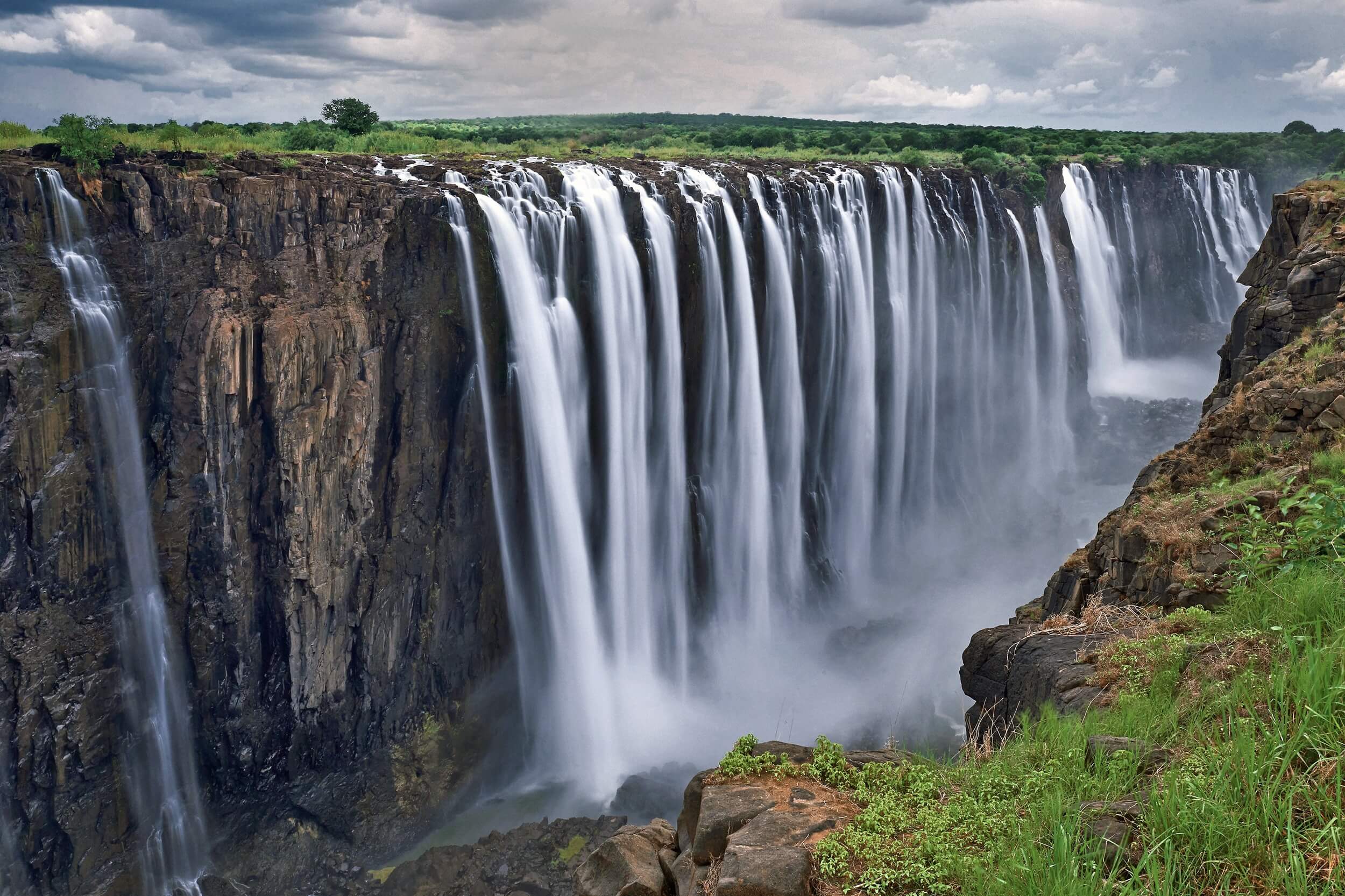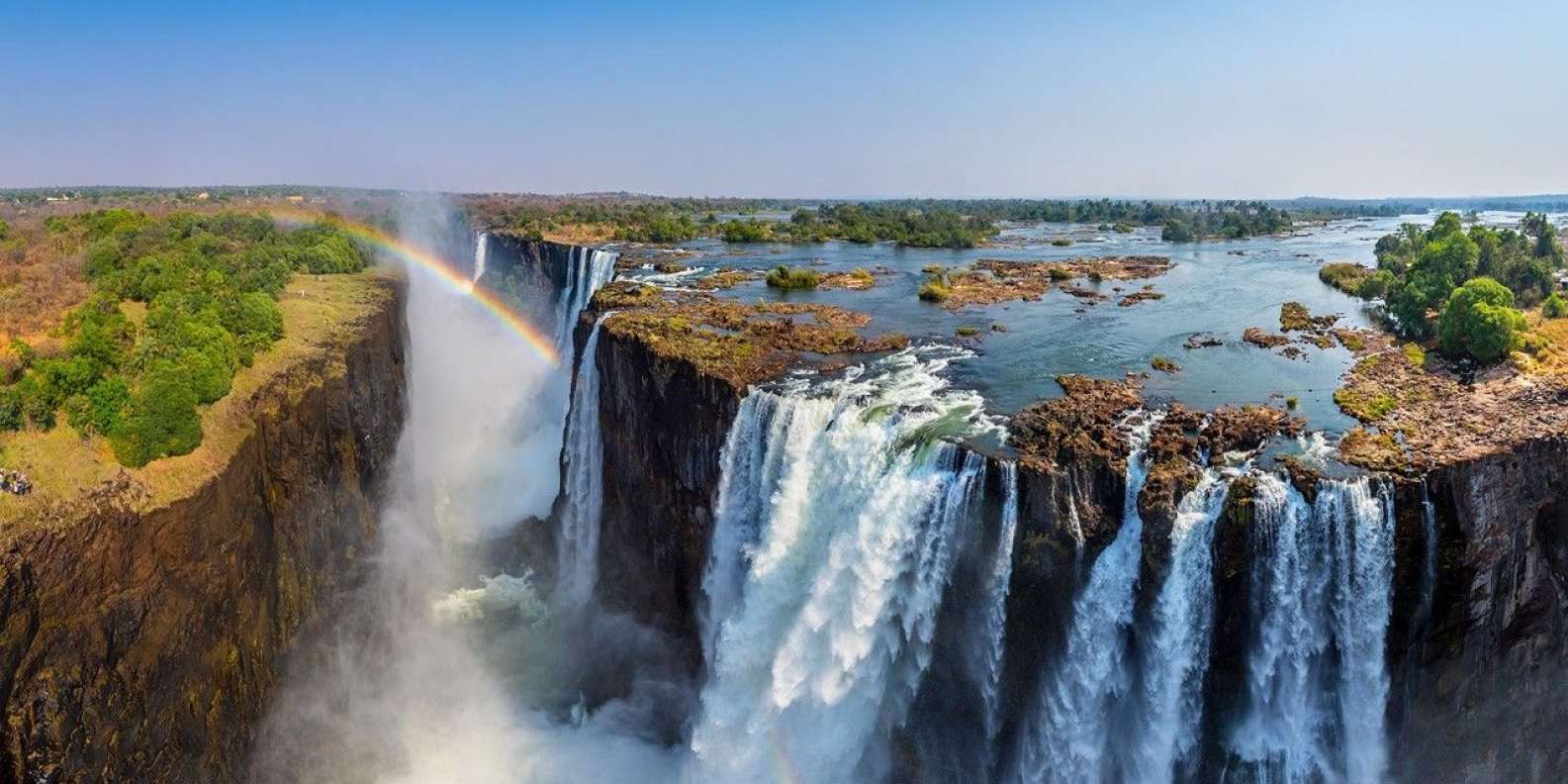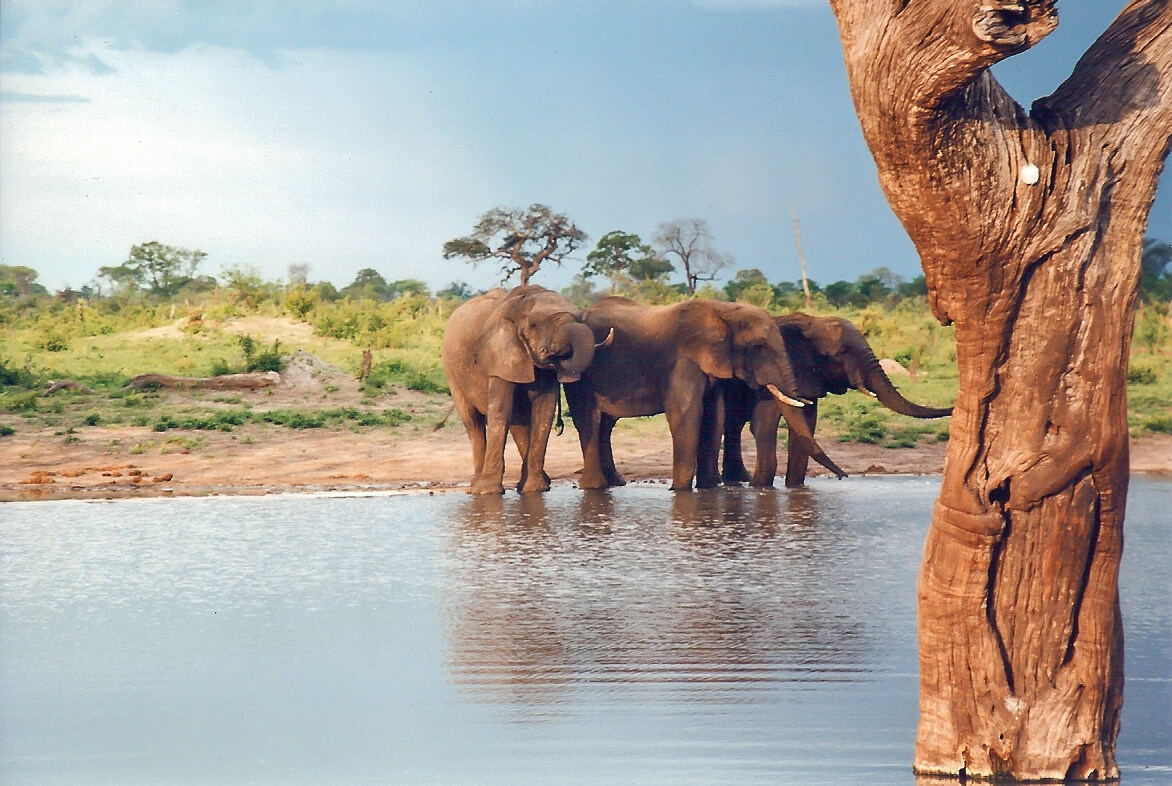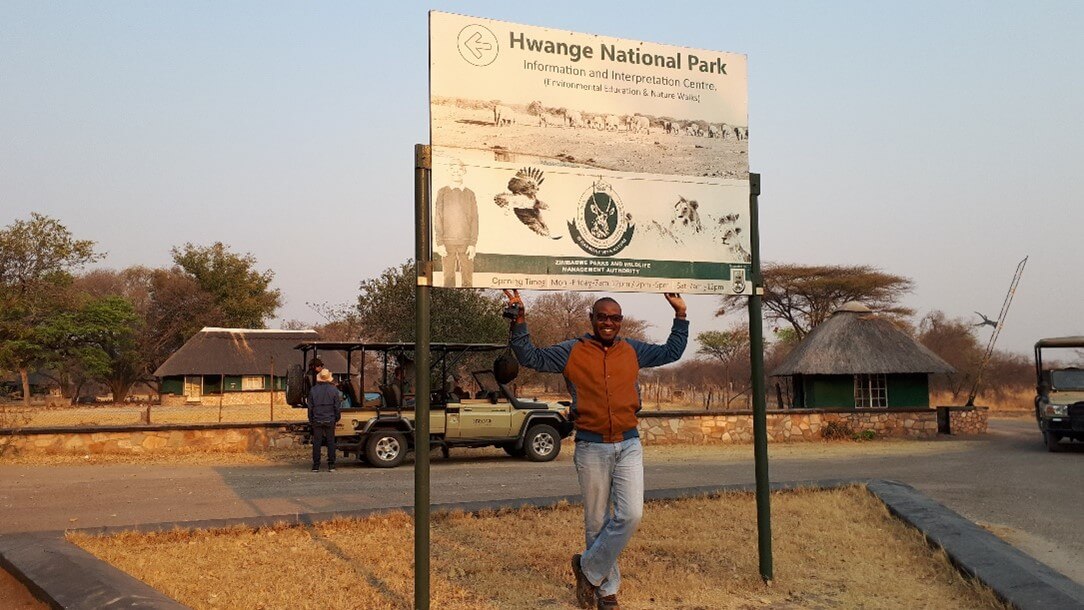Zimbabwe
Zimbabwe is located in the heart of Southern Africa. Its friendly people, with their rich cultures, make your visit as much eventful as possible.
Zimbabwe is renowned for numerous internationally acclaimed tourist destinations and offers you an unforgettable moment as it provides some of the finest safaris in Africa that offer site seeing, game and bird viewing, camping, sporting such as white-water rafting and bungie jumping, game hunting, fishing and boat cruising.
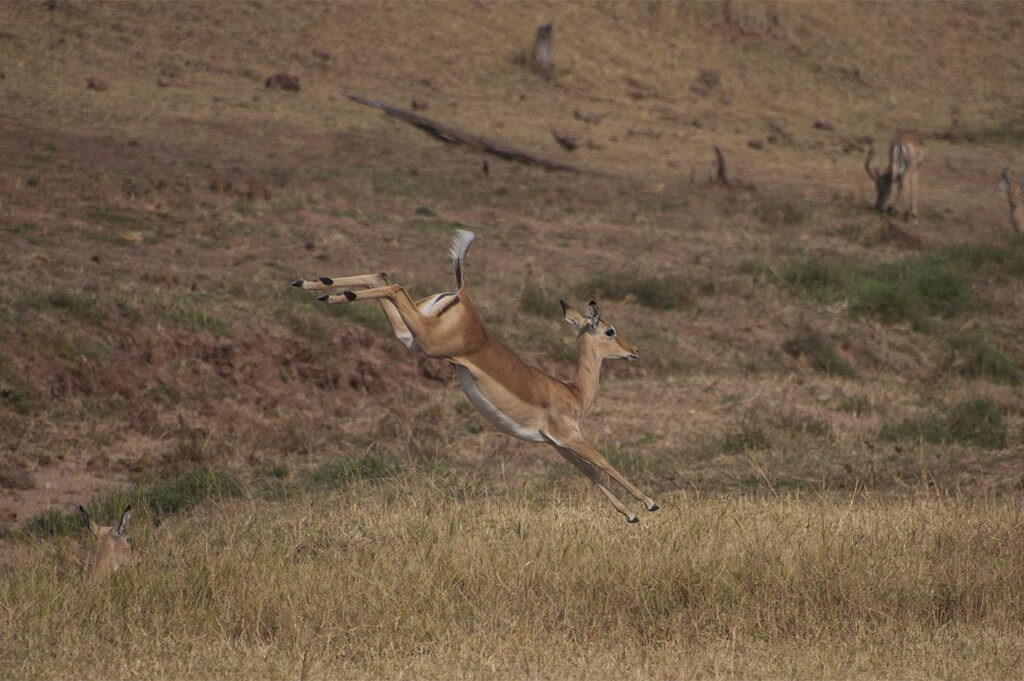
Victoria Falls
Victoria Falls was formed where the Zambezi drops 100m into a narrow gorge. The falls release over 5 million cubic metres of water over the falls per minute. You can hear the roar and see the spray of this immense waterfall rising up towards the sky as you approach from the road.
Victoria Falls offers many adventurous activities which include enchanting sightseeing flights over the falls, called ‘The Flight of Angels’, which can be done by helicopter, microlight or ultralight. There are more adrenaline raising activities and these include bungee-jump over the mighty Zambezi, zip-wire or gorge-swing across its vast width, canoe amongst its hippos and crocodiles, or raft down it on one of the world’s toughest stretches of white water.
The town itself has grown as a result of tourism activities tourism has returned. it will inevitably develop further as a hub for the entire Kavango-Zambezi region which includes parts of Namibia, Zambia, Angola and Botswana as well as Zimbabwe. Victoria Falls is now a pleasant, lively little town to amble around, with plenty of options for souvenir shopping, from lively craft markets to a modern shopping mall, and the mighty Falls only a short stroll away.
Hwange National Park
With an area of 14,600km², Hwange National Park is Zimbabwe’s largest game park. It borders Botswana. Because of its enormous size it has a variety of features which range from a semi desert scrub on the edge of the Kalahari in the South, forests, granite hills and various game and vegetation.
The most popular activities are walking safaris, day and night game drives which most of the safari camp’s offer; this gives you an opportunity to view various animals which form part of the 100 mammal species found here; examples are lion, leopard, rhinos, etc. There is also a large number of elephants. It is easier to spot the animals in the dry season when they come over to the water points to take some water and this is mainly in the dry season which is normally August to October.
Matusadona National Park
Lake Kariba which is one of the world’s greatest man-made lakes was created as a result of the floods from the Kariba Dam in the late 1950s. Matusadona National Park was created because of the variety of game that was on the island and the southern shore. Around this shoreline are some excellent safari lodges, offering walks and drives, as well as boat and canoe trips to explore the lake’s inlets and creeks. The lake is a superb place to watch the sunset, with the Matusadona Mountains in the background making for an excellent photo opportunity.
There is variety of wildlife around Lake Kariba and Matusadona National Park and this includes the Big five, and the rare Black and white rhinos living side by side. Crocodiles and herds of elephants can be spotted together with a large number of antelopes which support the existence of predatory animals like the lions. The bird life is exceptional due largely to the diverse habitation which supports, amongst many species, a very healthy fish-eagle population.
Mana Pools National Park
River Zambezi widens and slows down through the huge rift valley as it meanders through the Lower Zambezi Valley. It’s flanked by Zambia’s Lower Zambezi National Park on its north bank, and Zimbabwe’s Mana Pools National Park to the south.
There are several small oxbow lakes, surrounded by lush vegetation and tall stands of ebony and mahogany trees that have been formed over time due to the Zambezi River changing its course. Within the national park, these oxbow lakes have created four large pools (‘mana’ being the Shona word for ‘four’, giving the park its name) and these, along with the permanent Zambezi River, provide an abundance of water and greenery which in turn attract a wealth of big game and result in some stunning scenery.
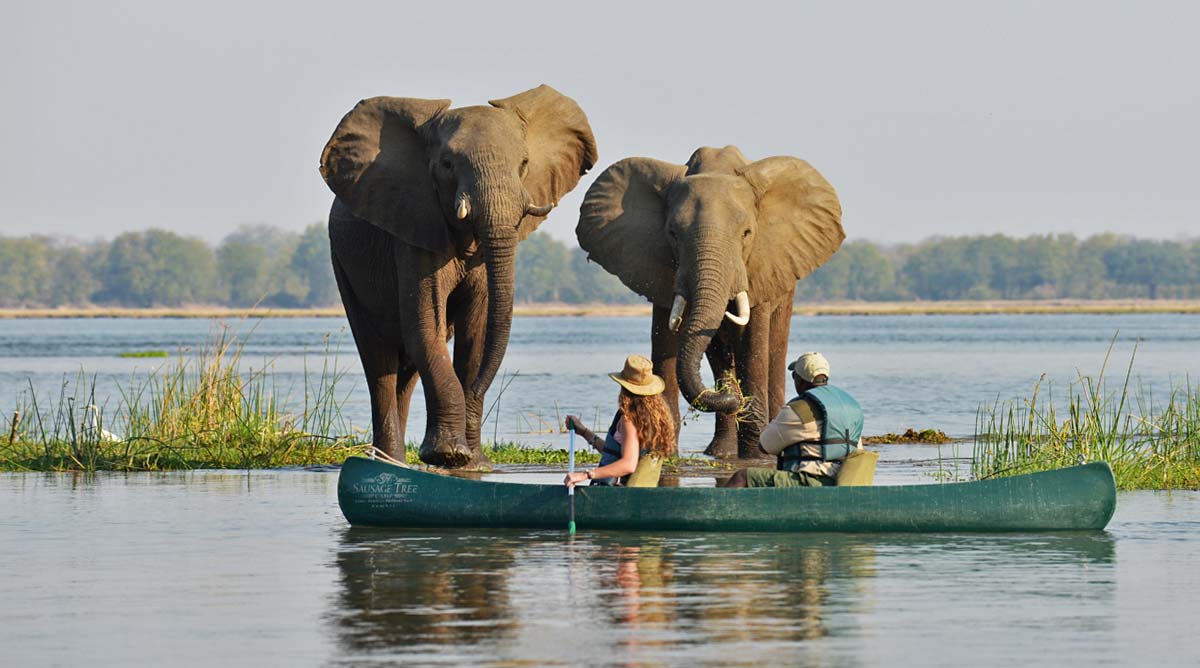
Activities on a Mana Pools Safari
With a large and varied habitat on land, and the Zambezi River forming the northern border of the park, Mana Pools offers a flexible choice of land- and water-based activities.
Game drives in open-topped safari vehicles are a fixture of all camps, as are canoeing trips on the river. These can be half-day, full-day or even multiple-day trips, with participants on the latter camping overnight on the riverbank. Catch-and-release fishing is also possible from most camps.
Since the park opened in 1963, walking safaris have been one of the most sought-after activities in the Mana Pools and there is no need to worry about being attacked by wildlife due to a low human population in the surrounding communities but also you are accompanied by an armed guide and because of this you easily come close to animals such as the elephants, lions and wild dogs.
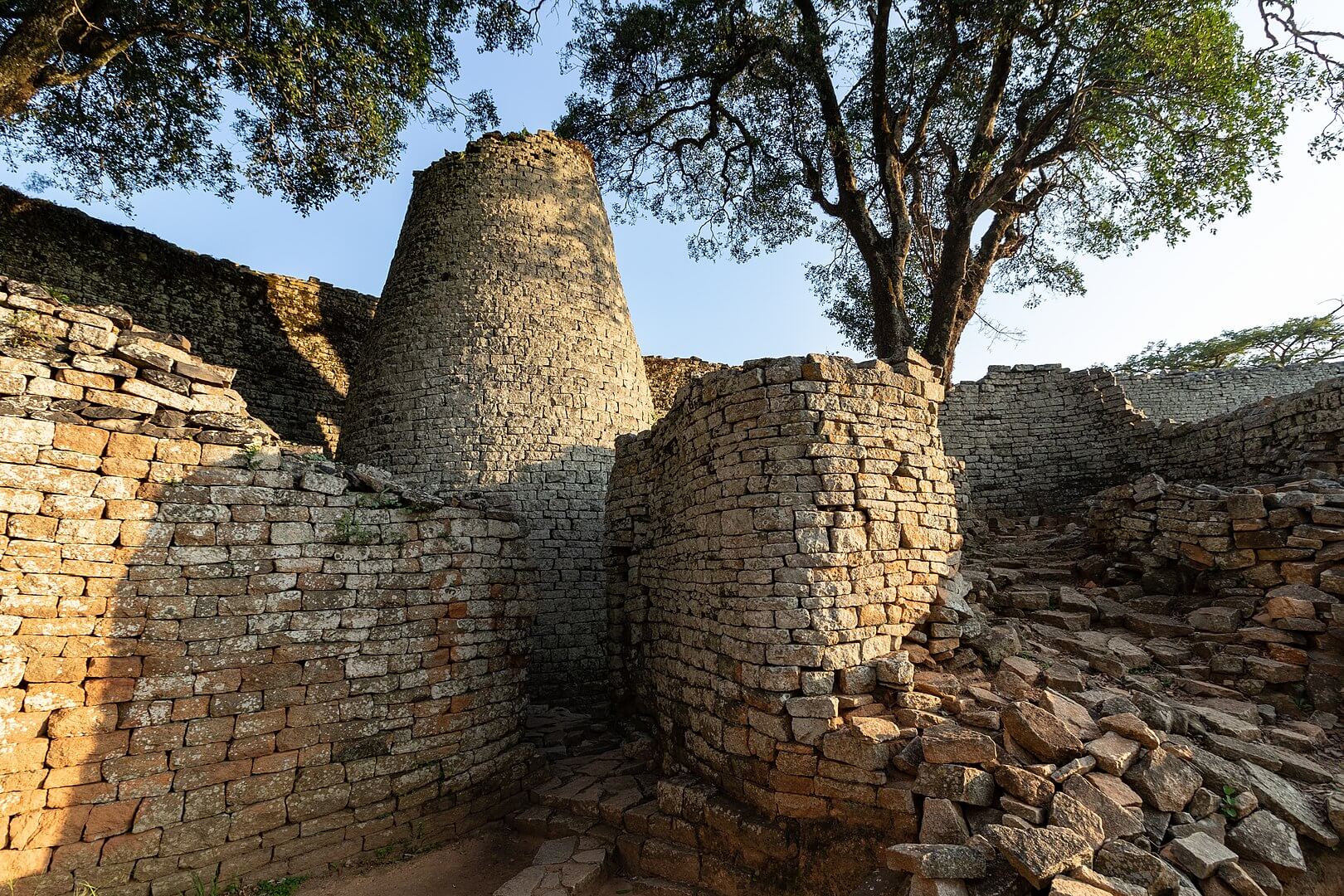
Great Zimbabwe Monument
Great Zimbabwe is Africa’s second largest stone built archaeological site after the pyramids. Zimbabwe derived its name from this stone which represented evidence of a great civilization before European colonization.
The stone is located in the south-central Masvingo Province, and is thought to have been constructed around 1100 AD, before being ‘discovered’ by the Portuguese in the early 1500s. The early European explorers had a thought that the locals could not have been in position to build such a structure and therefore linked it to biblical figures such as Sheba and King Solomon. However, it was the Sena people who first settled in the area in the 8th Century and quickly established a hugely important trading, religious and political centre, constructing the majority of the complex between the 11th and 15th Centuries.
The monument consists of three main areas:
- The Hill Complex, which has fantastic (and strategically valuable) views over the surrounding region. Parts of this complex are thought to have been the residence of early rulers here.
- The Valley Complex, which has unfortunately been plundered over the years, and today is one of the less impressive areas. However, as the location for both the royal treasury and the queen’s residence it can be an interesting area to visit with a good guide.
- The Great Enclosure is one of the most stunning areas, with vast walls concealing inner passage ways, ruined buildings, and the iconic conical tower.
Great Zimbabwe has been a UNESCO World Heritage Site since 1986, and has been well cared for since. Unfortunately, due to the country’s recent political troubles and Great Zimbabwe’s distance from the main safari areas, the site is currently little visited.
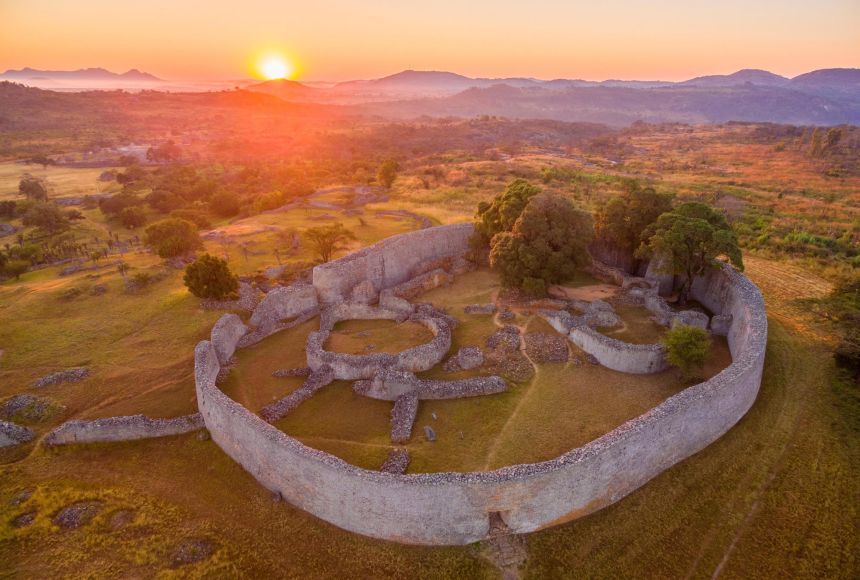
Victoria Falls in Zimbabwe
Victoria Falls located on the Zambezi River, the fourth largest river in Africa is one of the greatest attractions in Africa and one of the most spectacular waterfalls in the world. The Zambezi River also defines the border between Zambia and Zimbabwe. Victoria Falls is the only waterfall in the world with a length of more than a kilometre and a height of more than hundred meters. It is also considered to be the largest fall in the world. The noise of Victoria Falls can be heard from a distance of 40 kilometres, while the spray and mist from the falling water is rising to a height of over 400 meters and can be seen from a distance of 50 kilometres. No wonder that the local tribes used to call the waterfall Mosi-o-Tunya “The smoke that thunders”.
